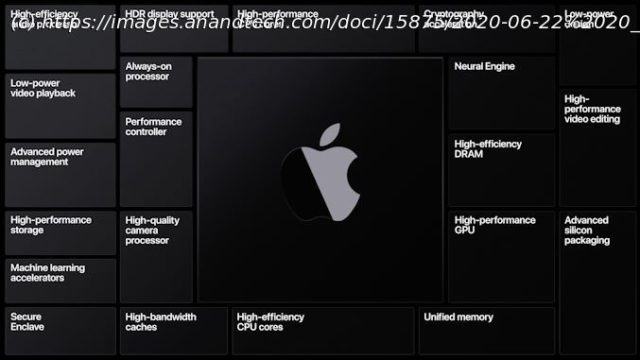After many months of rumors and speculation, Apple confirmed this morning during their annual WWDC keynote that the company intends to transition away from using…
After many months of rumors and speculation, Apple confirmed this morning during their annual WWDC keynote that the company intends to transition away from using x86 processors at the heart of their Mac family of computers. Replacing the venerable ISA – and the exclusively-Intel chips that Apple has been using – will be Apple’s own Arm-based custom silicon, with the company taking their extensive experience in producing SoCs for iOS devices, and applying that to making SoCs for Macs. With the first consumer devices slated to ship by the end of this year, Apple expects to complete the transition in about two years.
The last (and certainly most anticipated) segment of the keynote, Apple’s announcement that they are moving to using their own SoCs for future Macs was very much a traditional Apple announcement. Which is to say that it offered just enough information to whet developers (and consumers’) appetites without offering too much in the way of details too early. So while Apple has answered some very important questions immediately, there’s also a whole lot more we don’t know at the moment, and likely won’t known until late this year when hardware finally starts shipping.
What we do know, for the moment, is that this is the ultimate power play for Apple, with the company intending to leverage the full benefits of vertical integration. This kind of top-to-bottom control over hardware and software has been a major factor in the success of the company’s iOS devices, both with regards to hard metrics like performance and soft metrics like the user experience. So given what it’s enabled Apple to do for iPhones, iPads, etc, it’s not at all surprising to see that they want to do the same thing for the Mac. Even though the OS itself isn’t changing (much), the ramifications of Apple building the underlying hardware down to the SoC means that they can have the OS make full use of any special features that Apple bakes into their A-series SoCs. Idle power, ISPs, video encode/decode blocks, and neural networking inference are all subjects that are potentially on the table here.
At the heart of this shift in the Mac ecosystem will be the transition to new SoCs built by Apple. Curiously, the company has carefully avoided using the word “Arm” anywhere in their announcement, but given their extensive Arm experience, along with promises of a common architecture between iOS and Macs and their A12Z-based dev kit, and it’s easy to see that Apple is taking their own future into their hands with the Arm architecture. The company will be making a series of SoCs specifically for the Mac, and while I wouldn’t be too surprised if we see some iPad/Mac overlap, at the end of the day Apple will want SoCs more powerful than their current wares to replace the chips in their most powerful Mac desktops.
And it goes without saying that Apple’s pedigree in chip designs is nothing less than top-tier at this point. The company has continued to iterate on its CPU core designs year after year, making significant progress at a time when x86 partner Intel has stalled, allowing the company’s latest Lightning cores to exceed the IPC of Intel’s architectures, while overall performance has closed in on their best desktop chips.
Apple’s ability to outdo Intel’s wares is by no means guaranteed, especially when it comes to replacing the likes of the massive Xeon chips in the Mac Pro, but the company is coming into this with a seasoned design team that has done some amazing things with low-power phone and tablet SoCs. Now we’re going to get a chance to see what they can do when the last of the chains come off, and they are allowed to scale up their designs to full desktop and workstation-class chips. Apple believes they can deliver better performance at lower power than the current x86 chips they use, and we’re all excited to see just what they can do.
Though from an architecture standpoint, the timing of the transition is a bit of an odd one. As noted by our own Arm guru, Andrei Frumusanu, Arm is on the precipice of announcing the Arm v9 ISA, which will bring several notable additions to the ISA such as Scalable Vector Extension 2 (SVE2). So either Arm is about to announce v9, and Apple’s A14 SoCs will be among the first to implement the new ISA, otherwise Apple will be setting the baseline for macOS-on-Arm as v8.2 and its NEON extensions fairly late into the ISA’s lifecycle. This will be something worth keeping an eye on.
While for obvious reasons Apple’s messaging today is about where they want to be at the end of their two-year transition, their transition is just that: around two years long.






